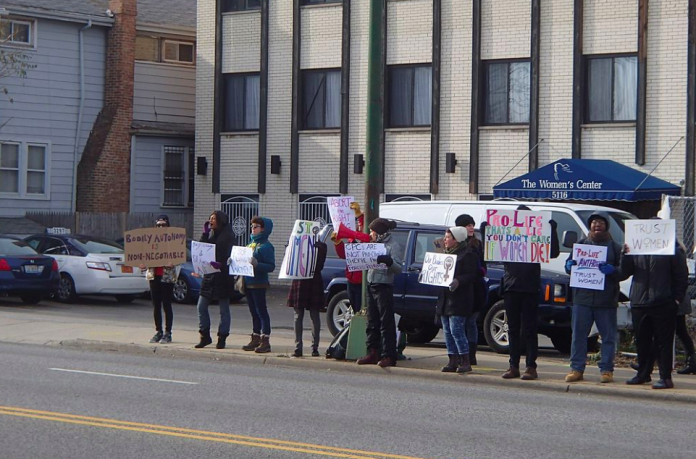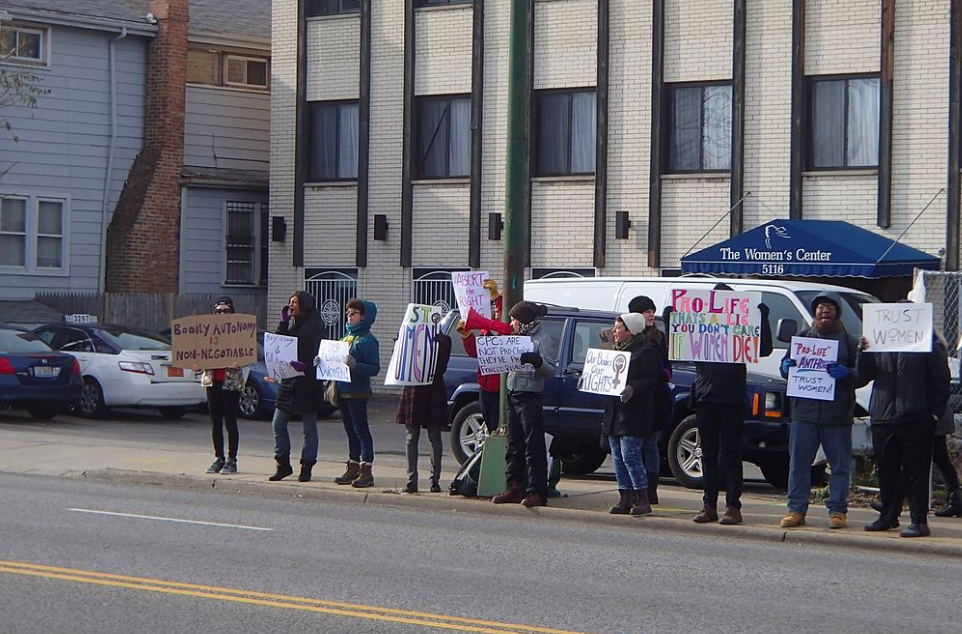
Last Tuesday, the Supreme Court said that the State of California may not require anti-choice “crisis pregnancy centers” to supply women with information about alternatives to end their pregnancies. California had enacted the requirement after finding that some 200 of these centers in the state had posed as medical clinics, and used “intentionally deceptive advertising and counseling practices that often confuse, misinform and even intimidate women from making fully informed, time-sensitive decisions about critical health care.”
Faith-based crisis pregnancy centers (CPCs) lure young, vulnerable, pregnant women–many of whom are seeking an abortion and believe they’ve come to the right place–into their centers to persuade them not to have abortions. They use psychological persuasion, lies, and even elaborate scams to send pregnant women away on “scholarships” to bear their children to be adopted into far-right households. There are some 3,000 of these CPCs in the country, advertised on billboards and in social media, about four times as many as clinics that actually perform abortions. Their staff often wear medical garb despite having no medical training, and no licensure as a clinic. They specialize in lies, coercion, and intimidation.

I know, because these clinics have been around a long time, and in 1986 I wrote one of the first stories about them, for the San Francisco Bay Guardian, going undercover to see their scare tactics first-hand. It’s impossible to believe that all these years later, they still exist, and are allowed to continue to mislead young women.
I began my investigation when I was at a pro-choice rally and one of the antis gave me a card: “Pregnant? Scared? We can help.” I had that reporter’s instinct that Something Just Didn’t Seem Right, and decided to go to the clinic for a consultation. I had a friend who was pregnant, so I took a jar of her urine with me.
At A Free Pregnancy Testing Center, after the “nurse” told me I was pregnant, I told her I was considering an abortion. She showed me a slide show, “Education on Abortion,” that listed all the possible ways one can supposedly be lacerated, perforated, punctured, or killed during an abortion. It also described women who went on to commit suicide after “experiencing the guilt of an abortion.” The show explained how abortion can render a woman infertile for life, then showed a series of slides of dead, aborted fetuses in trash cans, which, like all the information, were faked. I was glad I wasn’t actually pregnant, nauseated, and terrified.
After the slide show, the “nurse” started in on psychological tactics, questioning me about my boyfriend and relationship, using the name I had given her as my boyfriend’s name to make it more personal. “Don’t you think he loves you?” she asked. “Don’t you think you’d be a good mother?” Before I left, she promised me housing with people who would want to adopt my baby.
After that I visited Crisis Pregnancy Center in the Sunset, which was also advertised (remember the Yellow Pages?) as a medical center that would offer “all the options” for a pregnant woman. This clinic was attached to a church. Leafing through a staff notebook while I waited, I read, “Do not refer a single woman for contraceptives. The only acceptable birth control for a single woman is abstinence.” The woman at this center showed me similar photos of aborted fetuses, explained that I would never be able to have a baby after an abortion, and that I would have symptoms of depression for life. She suggested it was a good time for me to go back to the church, and that Jesus had died for my sins and would forgive me for considering abortion.
Then, as now, these centers targeted scared young women who can’t afford medical care. At the time, many were funded by the ultra-right-wing St. Louis-based Pearson Foundation, started in 1969, which provided training sessions, slide shows, pamphlets, video equipment, urine test kits, and a manual titled “How to Start and Operate Your Own Pro-Life Outreach Crisis Pregnancy Center.” These CPCs thrived, funded by anti-choice groups and the sale, in 29 states, of “Choose Life” license plates.
One San Francisco center, I found, deceived the parents of at least one minor, from Mission High School, telling them the girl had received a “scholarship” to Hawaii, where instead she went to have the baby to be given up for adoption to one of the families associated with the movement. The centers were called deceptive by numerous feminist organizations, the Texas Attorney General, the Federal Centers for Disease Control, and the California state Legislature, which passed the Reproductive FACT Act in 2015, compelling CPCs to post a notice that the state has programs to subsidize family planning services, including abortions. CPCs without medical licenses were also required to disclose that there were no medical professionals on the premises.
These are the protections that were recently reversed by the Supreme Court—on the basis of the First Amendment right to free speech.
In the years since I went undercover to these clinics, a legal case––Food Lion v. Capital Cities/ABC— has made it likely that what I did by posing as a pregnant woman could be illegal today. But the Supreme Court has made it legal for people to pose as medical professionals and tell lies to young, desperate pregnant women, coercing them with kindness into having babies that no one, thereafter, will help support.
